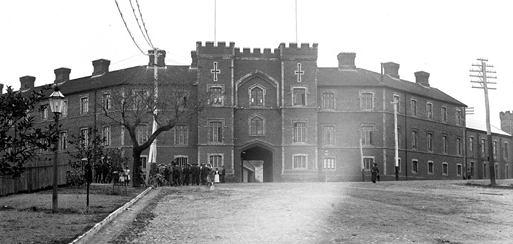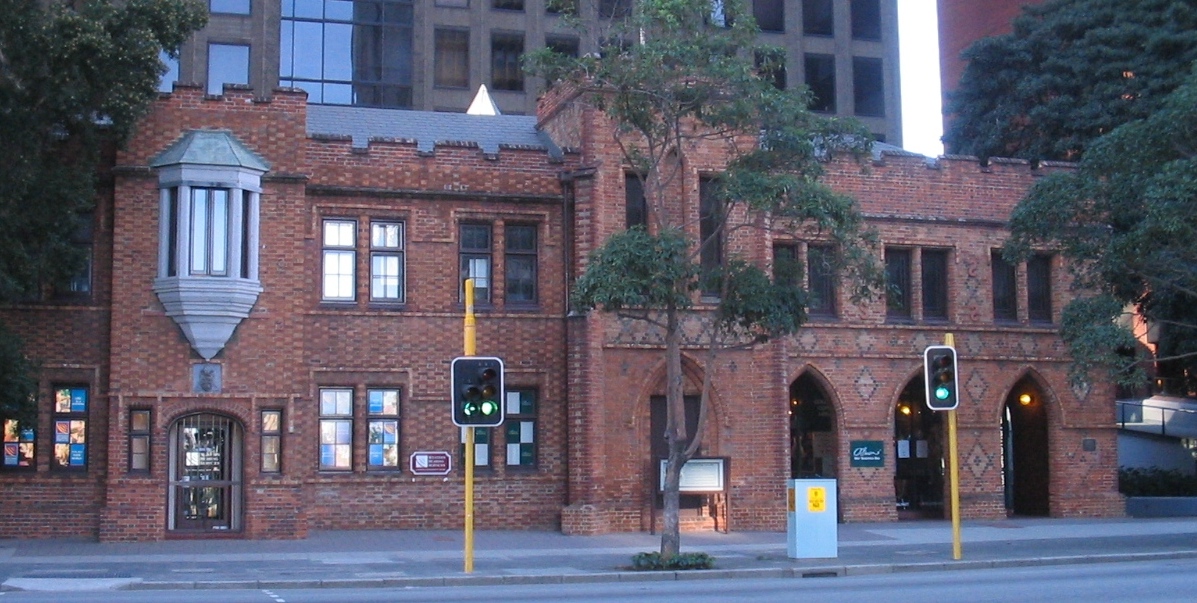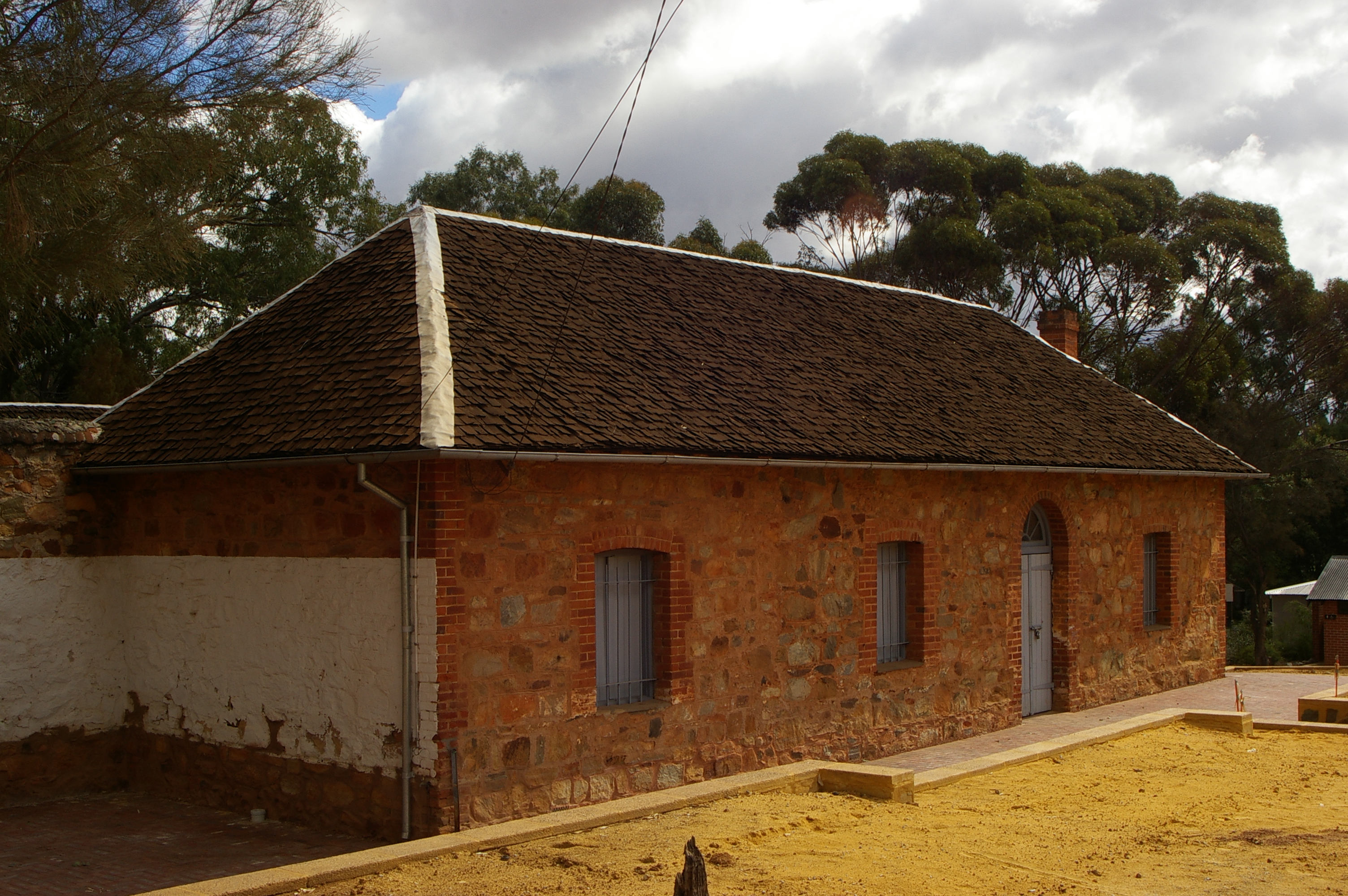Richard Roach Jewell on:
[Wikipedia]
[Google]
[Amazon]
Richard Roach Jewell (1810 in
 Jewell's duties initially included overseeing repairs of buildings, roads and bridges, and supervising the construction of the boys' schools in Perth and Fremantle. He was soon given the task of designing major buildings such as
Jewell's duties initially included overseeing repairs of buildings, roads and bridges, and supervising the construction of the boys' schools in Perth and Fremantle. He was soon given the task of designing major buildings such as
 With the colony lacking in funds Jewell also turned to brick construction in Perth. James Brittain had already established a brick yard in East Perth, supplying a wide range of wood fired bricks. The first major brick project by Jewell in Perth was Bishop Hale's Collegiate School of 1858. This building was designed based on a pattern already established with King's School in
With the colony lacking in funds Jewell also turned to brick construction in Perth. James Brittain had already established a brick yard in East Perth, supplying a wide range of wood fired bricks. The first major brick project by Jewell in Perth was Bishop Hale's Collegiate School of 1858. This building was designed based on a pattern already established with King's School in
 Jewell oversaw construction projects for over 30 years in Western Australia and many important buildings still standing were designed by him. In Perth, these include the Wesley Church,
Jewell oversaw construction projects for over 30 years in Western Australia and many important buildings still standing were designed by him. In Perth, these include the Wesley Church,
Barnstaple
Barnstaple ( or ) is a river-port town in North Devon, England, at the River Taw's lowest crossing point before the Bristol Channel. From the 14th century, it was licensed to export wool and won great wealth. Later it imported Irish wool, bu ...
, Devon, England – 1891 in Perth, Western Australia
Perth is the capital and largest city of the Australian state of Western Australia. It is the fourth most populous city in Australia and Oceania, with a population of 2.1 million (80% of the state) living in Greater Perth in 2020. Perth is ...
) was an architect who designed many of the important public buildings in Perth during the latter half of the nineteenth century. He was employed to supervise many major building projects around England, churches in Bristol, Cardiff, Clifton, Eye, Horsley and Stroudswater. As well as churches he also supervised construction of Stanstead College, a military prison in Gosport and fortifications at Portland Castle
Portland Castle is an artillery fort constructed by Henry VIII on the Isle of Portland, Dorset, between 1539 and 1541. It formed part of the King's Device programme to protect against invasion from France and the Holy Roman Empire, and defended ...
and Southsea Castle
Southsea Castle, historically also known as Chaderton Castle, South Castle and Portsea Castle, is an artillery fort originally constructed by Henry VIII on Portsea Island, Hampshire, in 1544. It formed part of the King's Device programme to p ...
. He was also employed as a clerk of works in the offices of Sir Charles Barry.
Biography
Early life
Richard Roach Jewell was born in 1810 in Barnstaple, Devon, England. He was trained as an architect/builder in Barnstaple inDevon
Devon ( , historically known as Devonshire , ) is a ceremonial and non-metropolitan county in South West England. The most populous settlement in Devon is the city of Plymouth, followed by Devon's county town, the city of Exeter. Devon is ...
shire.
Western Australia
In 1852 Jewell emigrated to Western Australia to seek a more temperate climate for his frail wife. They arrived inFremantle, Western Australia
Fremantle () () is a port city in Western Australia, located at the mouth of the Swan River in the metropolitan area of Perth, the state capital. Fremantle Harbour serves as the port of Perth. The Western Australian vernacular diminutive for ...
on the on 24 February 1852.
Jewell was initially employed in the Imperial Convict Establishment, which was established to manage British convicts which had started arriving in 1850 (''see: Convict era of Western Australia
The convict era of Western Australia was the period during which Western Australia was a penal colony of the British Empire. Although it received small numbers of juvenile offenders from 1842, it was not formally constituted as a penal colony u ...
''). The Fremantle based Convict Establishment was responsible for many large constructions in the colony with an already well established design department in the offices of the Royal Engineers headed by James Manning as Clerk of Works. Jewell soon transferred to the expanding Department of Public Works
This list indicates government departments in various countries dedicated to public works or infrastructure.
See also
* Public works
* Ministry or Board of Public Works, the imperial Chinese ministry overseeing public projects from the Tang ...
based in Perth
Perth is the capital and largest city of the Australian state of Western Australia. It is the fourth most populous city in Australia and Oceania, with a population of 2.1 million (80% of the state) living in Greater Perth in 2020. Perth is ...
and was appointed foreman in January 1853 at a salary of £150. In a letter to family in England dated 4 February Jewell commented on his salary
In the same letter Jewell wrote of his position and future aspirations;
He did not have long to wait, for in June 1853 the Superintendent of Public Works, James Austin resigned after a long-running battle with Governor Charles Fitzgerald over pay and conditions. Jewell was appointed to the position at an increased salary of £175 with an additional £25 for being Superintendent of Towns.
Superintendent of Public Works
 Jewell's duties initially included overseeing repairs of buildings, roads and bridges, and supervising the construction of the boys' schools in Perth and Fremantle. He was soon given the task of designing major buildings such as
Jewell's duties initially included overseeing repairs of buildings, roads and bridges, and supervising the construction of the boys' schools in Perth and Fremantle. He was soon given the task of designing major buildings such as Perth Gaol
The Perth Gaol (often referred to as the Old Perth Gaol) was a gaol built in Perth, the state capital of Western Australia, between 1854 and 1856 to house convicts and other prisoners. It is located just west of Beaufort Street.
It operated unt ...
and the court-house. Jewell was said to have worked hard and long into the night with his book-keeping duties. In 1853 he wrote to Governor Fitzgerald:
I have the honour to submit for the consideration and approval off His Excellency the Governor that he will be pleased to grant an allowance for candles used in writing the Public accounts done after office hours, as it is impossible to get the same performed during the day without neglecting other duties...Western Australian Museum information sheet: "The Old Perth Gaol"With the arrival of 300 convicts and ticket of leave persons, Perth had the labour necessary to commence building many substantial projects. The first of these that Jewell worked on were the Claisebrook Abattoirs, of which only drawings survive, and the Colonial School on St Georges Terrace that now houses the
National Trust
The National Trust, formally the National Trust for Places of Historic Interest or Natural Beauty, is a charity and membership organisation for heritage conservation in England, Wales and Northern Ireland. In Scotland, there is a separate and ...
. The Colonial School was built in two stages, the first being completed in 1854 and two wings being added in 1868 giving it a rough crucifix form. To provide for the convicts, Jewell designed the Perth Gaol
The Perth Gaol (often referred to as the Old Perth Gaol) was a gaol built in Perth, the state capital of Western Australia, between 1854 and 1856 to house convicts and other prisoners. It is located just west of Beaufort Street.
It operated unt ...
in 1854. All of these building utilised limestone carted by barges from quarries at Rocky Bay.
In about November 1854, he also designed Holy Trinity Church, York,Perth Gazette and Independent Journal of Politics and News 3 November 1854, p.2. which is in brick and of Victorian Romanesque design, and is still standing.
The Cloisters
 With the colony lacking in funds Jewell also turned to brick construction in Perth. James Brittain had already established a brick yard in East Perth, supplying a wide range of wood fired bricks. The first major brick project by Jewell in Perth was Bishop Hale's Collegiate School of 1858. This building was designed based on a pattern already established with King's School in
With the colony lacking in funds Jewell also turned to brick construction in Perth. James Brittain had already established a brick yard in East Perth, supplying a wide range of wood fired bricks. The first major brick project by Jewell in Perth was Bishop Hale's Collegiate School of 1858. This building was designed based on a pattern already established with King's School in Parramatta, New South Wales
Parramatta () is a suburb and major Central business district, commercial centre in Greater Western Sydney, located in the state of New South Wales, Australia. It is located approximately west of the Sydney central business district on the ban ...
and St Peters College in Adelaide, South Australia
Adelaide ( ) is the list of Australian capital cities, capital city of South Australia, the state's largest city and the list of cities in Australia by population, fifth-most populous city in Australia. "Adelaide" may refer to either Greater A ...
. Bishop Blagdon Hale paid for the building of the school out of his own purse, requesting an English- Gothic design. The building became known as ''The Cloisters
The Cloisters, also known as the Met Cloisters, is a museum in the Washington Heights neighborhood of Upper Manhattan, New York City. The museum, situated in Fort Tryon Park, specializes in European medieval art and architecture, with a fo ...
'' due to the effect of the ground floor verandahs.
The Cloisters uses a patterned brick style set in Flemish bond with diaper patterns to selected panels. The building was first classified by the National Trust in 1973, and together with the adjoining Port Jackson Fig Tree was placed on the permanent heritage register on 20 October 1995. The Cloisters is the oldest building designed by Jewell in Perth still standing at its original location. With the building of the Hammersley Iron offices in the early 1980s behind The Cloisters the area is now known as Cloisters Square
The Cloisters is located at 200 St Georges Terrace, opposite its intersection with Mill Street in Perth, Western Australia. It is a two-storey dark coloured brick building, which terminates the vista at the top of Mill Street and is a landmark ...
.
Government House
Government house was designed by Officers of the Royal Engineers and James Manning with building commencing 1859. The Convict Establishment was based in Fremantle, so Jewell was appointed to supervise the construction. Jewell amended many of the details during construction, citing a common architectural ploy by continually commenting on the lack of information or drawings provided by Manning. This method enabled Jewell to substantially personalise the building to his tastes, with the building being completed in 1864.Perth Town Hall
The Perth Town Hall built between 1867 and 1870, was to break from the normal Tudor Gothic designs by using a Flemish style of brick work with French influences. The overall designs are credited to Jewell though Manning was again involved with its building and its generally recognised that the roofing structure was Manning's designs.Other buildings
Public Trust Office
The Public Trust Office is a heritage-listed office building at 19–21 O'Connell Street, Sydney, Australia. It was designed by Ross & Rowe and built from 1926. It is also known as the Public Trustee. It was originally known as Rofe Chambers. I ...
, the Treasury Buildings
A treasury is either
*A government department related to finance and taxation, a finance ministry.
*A place or location where treasure, such as currency or precious items are kept. These can be state or royal property, church treasure or in p ...
, Pensioners' Barracks (Barracks Arch
The Barracks Arch is located on the corner of Malcolm and Elder Streets, at the western end of St Georges Terrace in Perth, Western Australia.
The Barracks
Designed by Richard Roach Jewell, the Barracks were originally built from 1863 to 18 ...
) and The Deanery. Outside Perth, notable buildings included Holy Trinity Church, 1855, and the Convent School in York
York is a cathedral city with Roman origins, sited at the confluence of the rivers Ouse and Foss in North Yorkshire, England. It is the historic county town of Yorkshire. The city has many historic buildings and other structures, such as a ...
, 1872;Perth Gazette 18 November 1870 page 3 Court No 2 in the York Courthouse; Toodyay gaol, Roebourne residency and police station, Greenough police station and Geraldton
Geraldton ( Wajarri: ''Jambinu'', Wilunyu: ''Jambinbirri'') is a coastal city in the Mid West region of the Australian state of Western Australia, north of the state capital, Perth.
At June 2018, Geraldton had an urban population of 37,648. ...
hospital.
Retirement and death
With the death of his wife on 19 July 1884, Jewell retired and was replaced by George Temple-Poole then working in Ceylon. He died on 1 June 1891 and is buried in theEast Perth Cemeteries
East Perth Cemeteries was the first cemetery established for the Swan River Colony in 1829 in East Perth, Western Australia. It is estimated that as many as 10,000 people were buried there between 1829 and 1919 in seven independently administer ...
near St Bartholomew's Church, another of his many designs.
Notes
References
*''Architects of Australia'' edited by Howard Tanner, ''Richard Roach Jewell'' by Howard Tanner pg 38-42. published by Macmillan 1981 {{DEFAULTSORT:Jewell, Richard 19th-century English architects Architects from Western Australia Settlers of Western Australia People from Perth, Western Australia People from Barnstaple 1810 births 1891 deaths Burials at East Perth Cemeteries 19th-century Australian public servants Architects from Devon